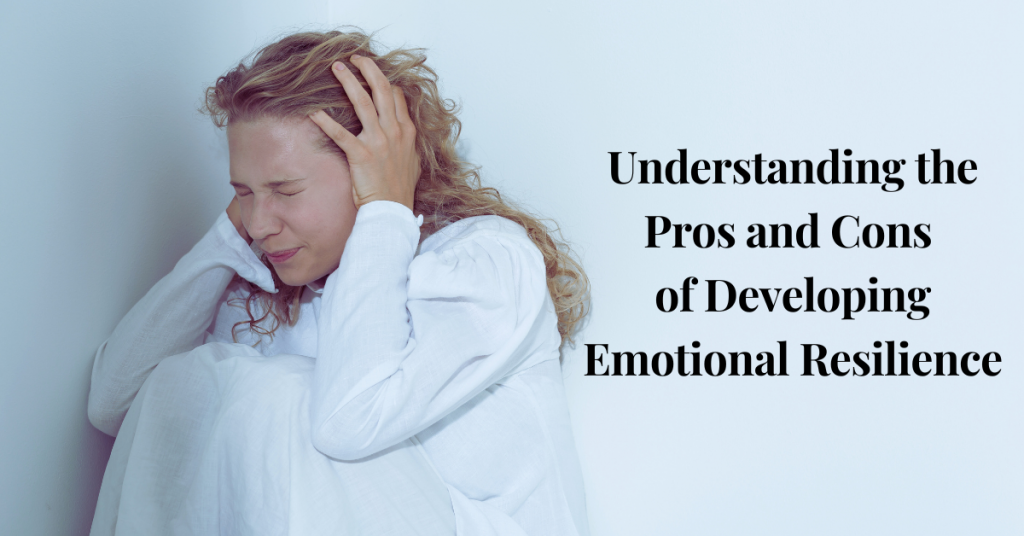Distress Tolerance Pros And Cons and Practical Insights

Distress Tolerance: Understanding the Pros and Cons of Developing Emotional Resilience
Distress tolerance is crucial to emotional well-being, encompassing coping with distressing emotions and situations without resorting to harmful behaviors or avoidance. In this article, we will explore the pros and cons of developing distress tolerance, shedding light on the significance of this skill in navigating the complexities of human emotions.

- What is Distress Tolerance?
- The Importance of Developing Distress Tolerance
- Advantages of Distress Tolerance
- Drawbacks of Distress Tolerance
- Common Techniques for Developing Distress Tolerance
- The Role of Professional Help
- Misunderstandings and Myths about Distress Tolerance
- Real-Life Success Stories
- Distress Tolerance in Daily Life
- Cultural and Individual Differences in Distress Tolerance
- Final Thought
- Unique FAQs About Distress Tolerance
What is Distress Tolerance?
Distress tolerance is the capacity to endure emotional distress and discomfort without attempting to escape or suppress those feelings. Unlike emotional suppression, which involves ignoring or denying emotions, distress tolerance focuses on facing emotions head-on and learning to cope with them effectively.
The Importance of Developing Distress Tolerance
Developing distress tolerance skills can profoundly impact mental health and overall well-being. By tolerating distress, individuals can better cope with challenging situations, reduce impulsive reactions, and develop emotional resilience.
Advantages of Distress Tolerance
Distress tolerance equips individuals with the tools to withstand emotional turbulence, promoting a greater sense of resilience in adversity.
Reduced Risk of Maladaptive Coping Mechanisms:
Individuals with strong distress tolerance are less likely to engage in maladaptive coping mechanisms, such as substance abuse or self-harming behaviors.
Improved Interpersonal Relationships:
By learning to tolerate distress, individuals can communicate more effectively during difficult times, leading to healthier and more supportive interpersonal relationships.
Increased Self-Awareness and Self-Compassion:
Distress tolerance fosters self-awareness and self-compassion, encouraging individuals to acknowledge and accept their emotions without judgment.
Drawbacks of Distress Tolerance
Initial Discomfort During the Learning Process:
Developing distress tolerance skills may initially be challenging and uncomfortable, as it involves confronting previously avoided or suppressed emotions.
Misconceptions About Distress Tolerance Leading to Avoidance of Emotions:
Some individuals may misunderstand distress tolerance, fearing it encourages dwelling on negative emotions rather than working through them.
Common Techniques for Developing Distress Tolerance
Mindfulness Practices and Grounding Exercises:
Mindfulness techniques help individuals stay present at the moment and acknowledge their emotions without judgment. Grounding exercises involve focusing on the physical senses to help alleviate distress.
Emotion Regulation Strategies:
Regulating emotions effectively can help individuals navigate distressing situations with a more balanced and controlled approach.
Physical Activities to Release Tension and Stress:
Physical exercise or yoga can release tension and reduce emotional distress.
The Role of Professional Help
For individuals struggling to develop distress tolerance or facing overwhelming emotional challenges, seeking professional help from therapists or counselors is vital. Therapeutic interventions can provide support and guidance in building distress tolerance skills.
Misunderstandings and Myths about Distress Tolerance
Some individuals may misconceive distress tolerance as a stoic attitude that suppresses emotions, but in reality, it encourages acknowledging emotions with compassion and finding healthy ways to cope with them.
Real-Life Success Stories
Share stories of individuals who have successfully developed distress tolerance skills, highlighting their positive impact on their lives.
Distress Tolerance in Daily Life
Explore practical applications of distress tolerance in various situations, such as managing stress at work or navigating conflicts in relationships.
Cultural and Individual Differences in Distress Tolerance
Acknowledge that distress tolerance may vary based on cultural backgrounds and individual experiences, emphasizing the importance of personalized approaches to developing this skill.
Final Thought
In conclusion, developing distress tolerance is a valuable skill that promotes emotional resilience, healthier coping mechanisms, and improved relationships. By embracing distress tolerance and learning to navigate emotions effectively, individuals can experience greater well-being and emotional balance. Remember that seeking professional help when needed can further enhance the process of stress tolerance and foster silence.
Unique FAQs About Distress Tolerance
Q: Can distress tolerance help with anxiety and panic attacks?
A: Yes, distress tolerance skills can effectively manage anxiety and panic attacks by helping individuals stay present and regulate their emotional responses.
Q: Is distress tolerance the same as emotional detachment?
A: No, distress tolerance encourages acknowledging emotions while maintaining balance, whereas emotional detachment involves disconnecting from emotions altogether.
Q: Can distress tolerance be learned at any age?
A: Yes, distress tolerance can be developed and honed at any stage of life through practice and guidance.
Q: Does distress tolerance replace the need for professional therapy?
A: While distress tolerance is valuable, professional therapy may still be necessary for individuals dealing with complex emotional issues.
Q: Can distress tolerance help in managing chronic stress?
A: Distress tolerance skills can aid in managing chronic stress by promoting healthier coping strategies and emotional regulation.

Recommendation